Innovation tools are meant to help organizations utilize the brain power of their entire workforce to generate ideas and turn them into innovative solutions.
In our experience, there are generally four types of innovation tools:
Idea sketching tools include mind mapping and brainstorming tools that help users develop innovative ideas.
Idea collection tools allow organizations to inform their employees, customers, partners, and other users about their priorities and encourage them to submit related ideas.
Idea improvement tools centralize all idea submissions and allow everyone inside the organization to view them. This way, users can review each other's ideas and suggest improvements.
Idea evaluation and validation tools help organizations run experiments to test an idea's potential impact, risk, and feasibility and understand whether they should implement it.
For small organizations managing a limited number of ideas, standalone innovation tools often meet their needs — such as surveys for idea collection, whiteboard software for collaboration, and project management tools for validation and implementation.
However, as organizations begin to manage more ideas, they outgrow these systems and require coordination across multiple tools. This leads to lost ideas, disorganization, and reduced transparency in the innovation process since there’s no single platform for users to track the progress of all ideas.
This is why, for larger organizations, we recommend centralizing innovation efforts within a single innovation management tool. This allows organizations to track and manage the entire lifecycle of an idea in one place — collection, improvement, evaluation, validation, and impact tracking — without coordinating inside several tools.
In this guide, we explore the top five innovation tools for managing the entire innovation process. We begin with our innovation management platform, InnovationCast, and explain how it supports the full lifecycle of an idea.
Then, we cover a few alternative options on the market, such as HYPE Innovation, Wazoku, Brightidea, and Qmarkets. We also cover individual innovation tools that focus on specific parts of the innovation process.
To learn more about how InnovationCast can support your team, schedule a free demo.
1. InnovationCast
Innovation Management Software That Supports Ideas from Collection to Implementation
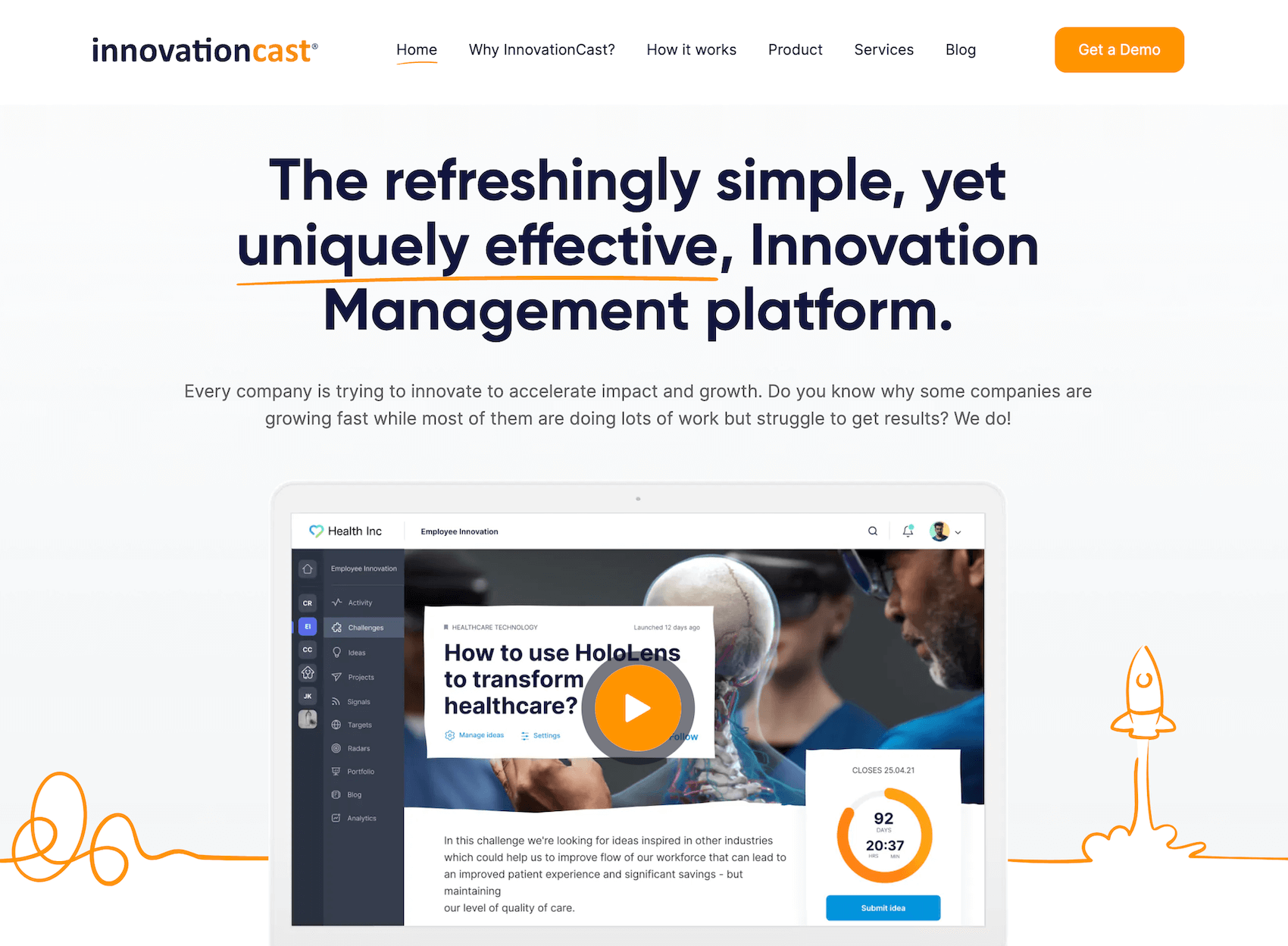
InnovationCast is a comprehensive innovation management platform that enables organizations to manage each stage of the innovation process — idea collection, improvement, evaluation, validation, and impact tracking.
Innovation managers can post Innovation Challenges that invite employees (and outside experts) to submit ideas on the priorities the organization is currently focusing on.
Then, you can crowdsource idea feedback by featuring all idea submissions on the InnovationCast news feed, allowing other users to review them, ask questions, and suggest changes. This yields more refined ideas.
Finally, you can evaluate ideas using our idea evaluation workflows. These workflows specify the steps teams should take to understand whether an idea is worth moving forward with. Depending on the idea, these steps may involve creating a prototype, conducting market research, or building a business case.
Let’s dive deeper into the specifics of these features below.
How InnovationCast Supports Targeted Idea Collection
Innovation Challenges: Source Ideas on Specific Topics Before a Deadline Date
We designed InnovationCast with a feature called Innovation Challenges to help organizations source ideas aligned with their key focus areas, rather than just general suggestions from employees.
Innovation Challenges are time-limited calls for users (employees, customers, partners, etc.) to share their best ideas on specific opportunities, problems, or company goals. Innovation managers, stakeholders, and department leaders can post a challenge around anything they want to address, such as data privacy compliance, market expansion, or new technology adoption.
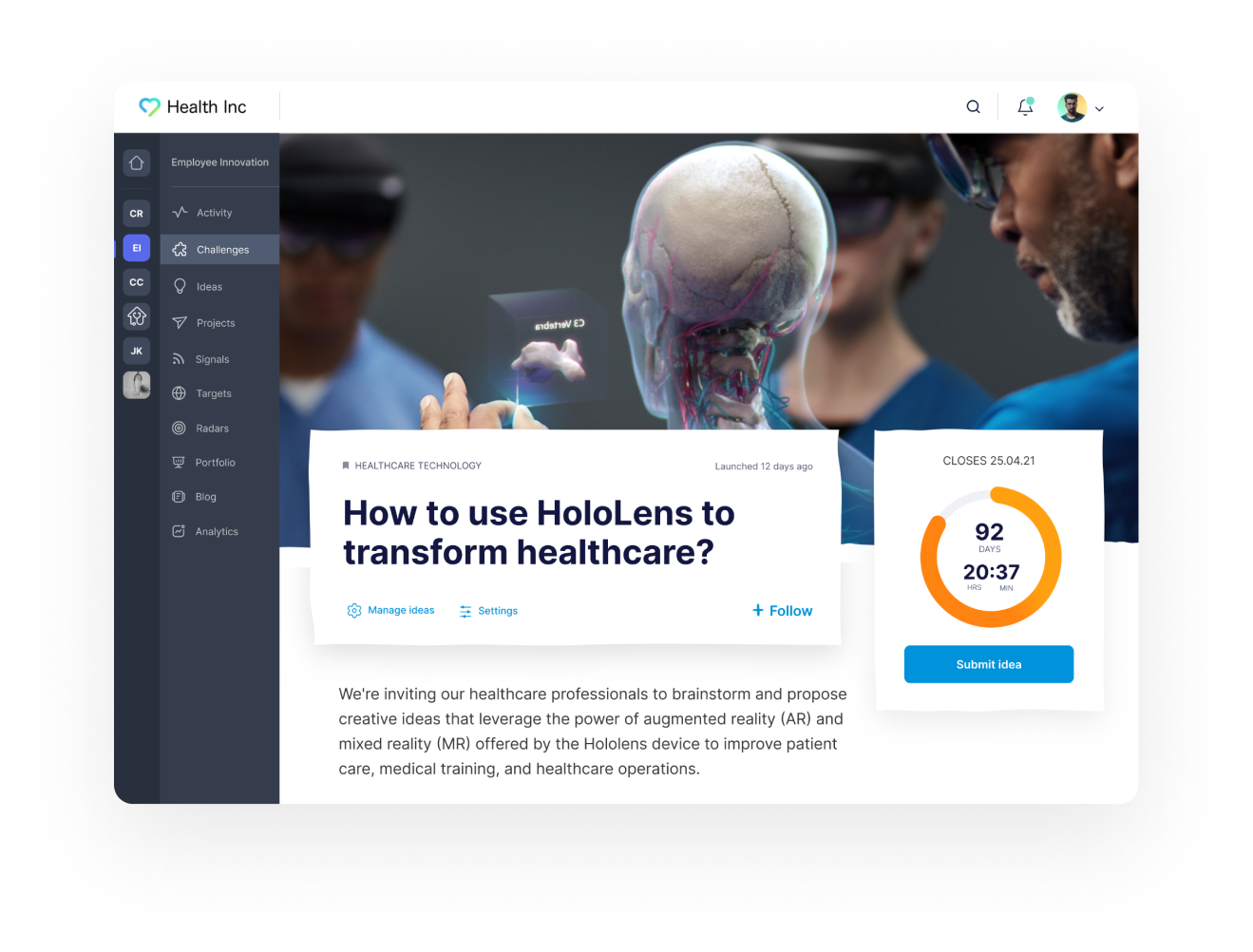
Inside each of these challenges, innovation managers can communicate the priority to users by attaching resources such as articles, videos, FAQ sections, customer interviews, and anything else they believe users should know about to improve the quality of the captured ideas.
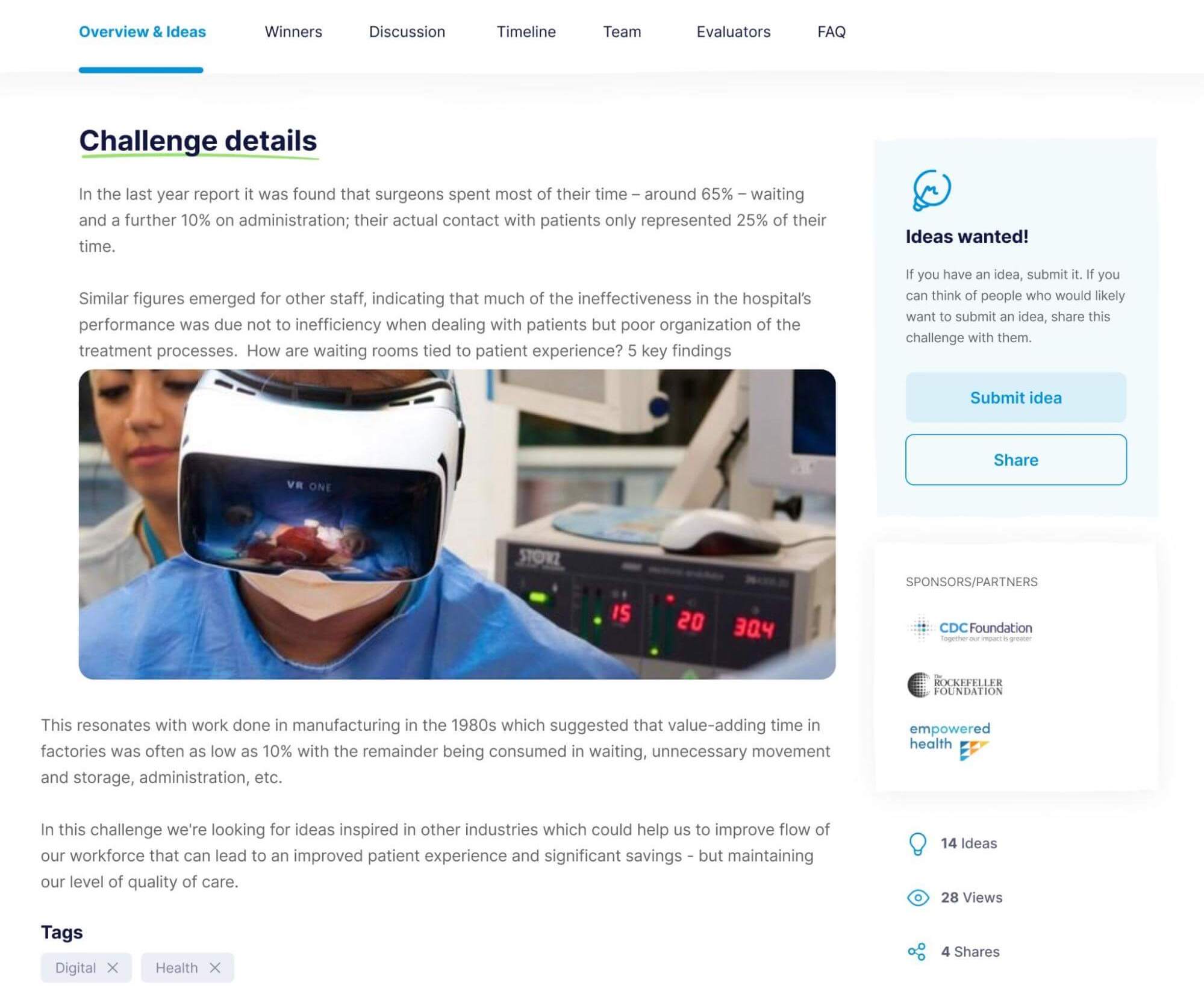
Then, when someone submits an idea, innovation managers can use our pre-built submission forms to ask questions that get idea authors thinking through aspects of their idea they might not have considered.
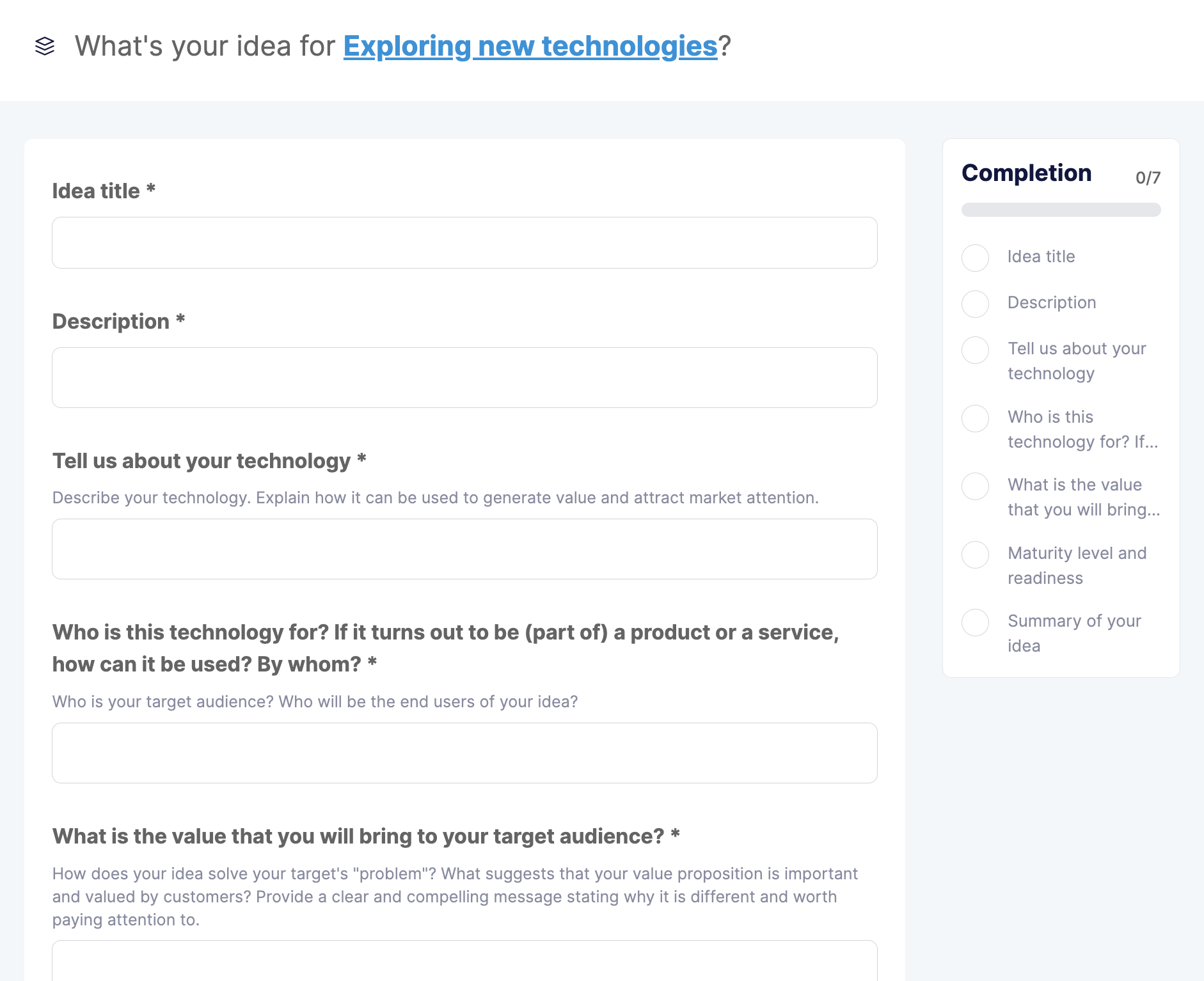
Lastly, users are encouraged to participate quickly because each challenge has a closing date. This creates a sense of urgency you don’t get with open-ended idea calls.
Read more: 5 Detailed Innovation Challenge Examples & Best Practices
Category-Based “Always On” Idea Collection: You Can Source Ideas 24/7
While it's best practice to source ideas using challenges due to the benefits discussed above, it's necessary to have open calls for ideas that allow users to submit ideas whenever they like. This ensures users can share suggestions for business improvements or emerging opportunities, even if no related challenge is currently open.
With this in mind, we added an "Always On" feature to InnovationCast, as it allows users to share ideas 24/7. However, in our experience, the success of open calls for ideas hinges on users sorting their ideas into broader, less urgent priorities that the organization is trying to address.
For example, if the organization is open to suggestions on improving internal work processes, they can have a general bucket like "continuous improvement" for users to submit their ideas. This ensures all ideas remain aligned with the organization's priorities.
This is why, with "Always On," organizations can require users to categorize their ideas into specific buckets before submission.
As an example, the screenshot below shows an innovation department inside a healthcare company asking users to sort their idea into one of four topics; healthcare technology, patient experiences, infection control, and sustainable healthcare:
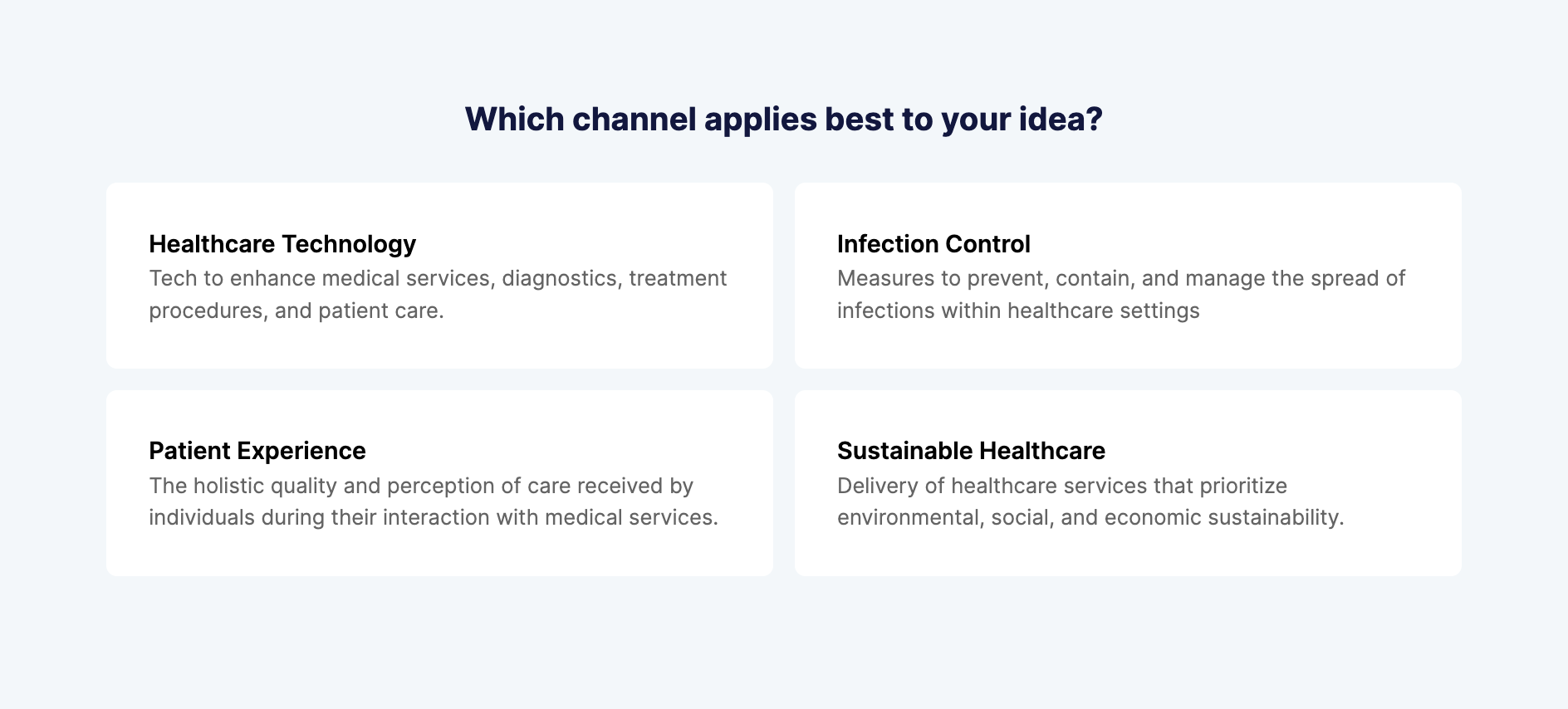
Read more: 7 Strategies to Get Innovative Ideas from Employees
How InnovationCast Supports Idea Improvement
It’s important to remember that users seldom submit fully polished ideas, even with provided context about your priorities and submission forms asking them to think through their ideas. Most ideas will require some degree of refinement before they can be launched.
This is why organizations with successful innovation processes typically include an idea improvement step, allowing users to view and collaborate on each other's ideas.
However, a mistake we see many innovation tools make is that they treat idea improvement as a popularity contest. They ask users to give ideas a thumbs up or thumbs down or maybe rate the idea from one to five stars, but they don’t encourage users to collaborate with the original author and edit the idea. This approach effectively handcuffs idea improvement.
With this in mind, we designed InnovationCast with the capability to crowdsource idea improvement. When a user submits an idea, it’s displayed on the InnovationCast news feed for others to see. These users can analyze the details inside the idea and say whether they think an idea “Looks Good,” “Not So Good,” or they are “Undecided.”
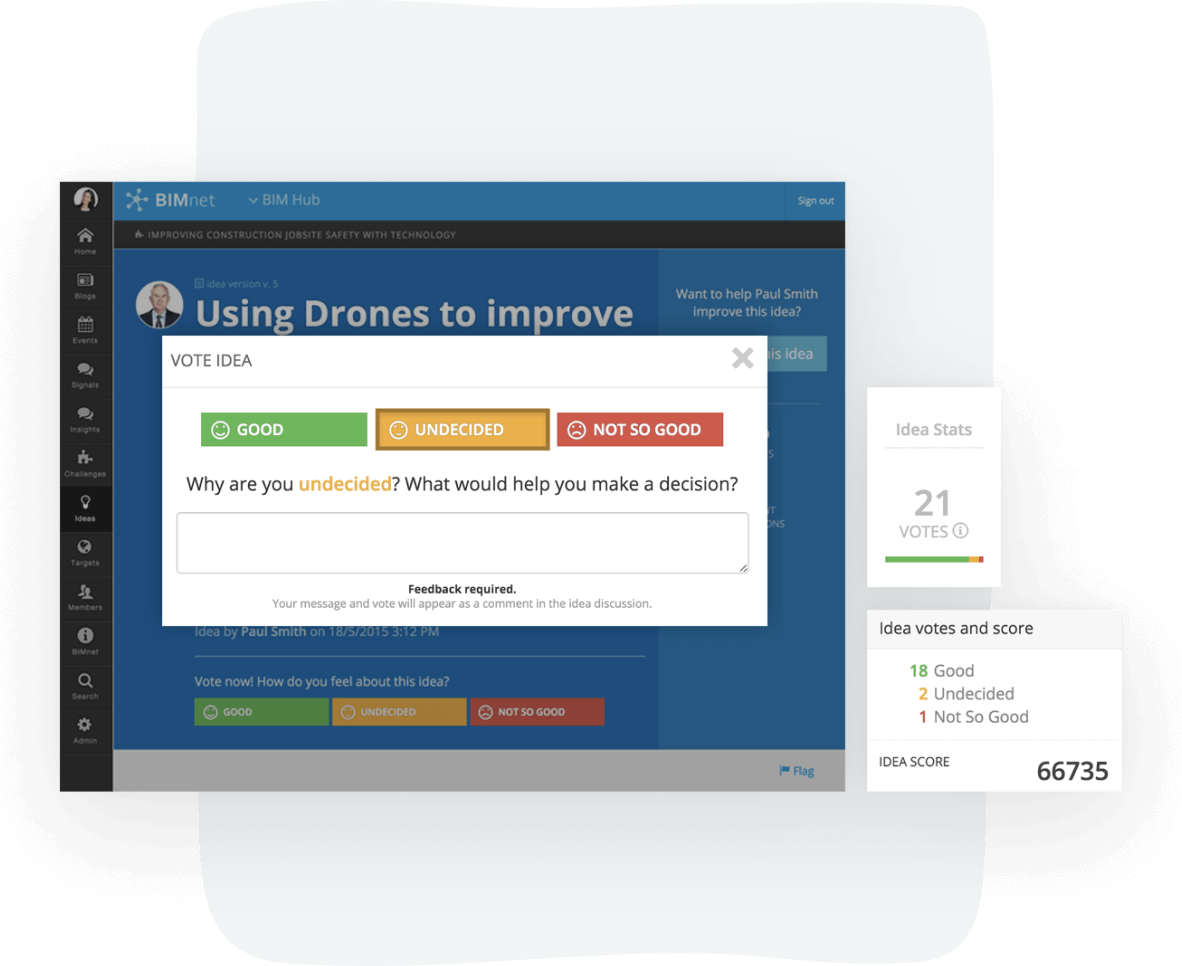
InnovationCast encourages discussion by requiring voters to provide feedback on how ideas can be improved.
This benefits idea authors by allowing them to leverage the expertise of their colleagues and outside experts, increasing the likelihood of their idea moving to evaluation. The organization benefits as well, gaining higher-quality ideas through crowdsourced feedback.
How InnovationCast Supports Idea Evaluation and Validation
As we talked about in our disruption story, an integral part of establishing an effective innovation process is having the systems to support what happens after idea collection. This often includes evaluating ideas against specific criteria and, depending on the risk involved, running experiments to test whether they meet expectations.
Understanding this, we built InnovationCast with:
Idea evaluation workflows that guide users through evaluating and validating different types of ideas.
A project management tool that organizations can use for implementing ideas.
A portfolio management feature that provides organizations with an overview of all ideas previously pursued.
Idea Evaluation Workflows
Idea evaluation workflows are a set of tasks or experiments that teams must complete to determine whether an idea is worth implementing. The tasks inside these evaluation workflows will differ depending on the level of risk and uncertainty involved with implementing an idea.
For continuous improvement ideas, like a coffee company launching a new flavor or a CRM company simplifying its navigation menu, the evaluation workflow may involve creating a business case and quickly launching the idea if there’s high confidence. If the idea isn’t successful, it won’t significantly affect the company since the resources involved are limited.
For riskier ideas, such as a company developing a new product and entering a new market, additional validation work is needed. The product team may need to build a prototype and send it to a few customers, and then have the customer success team conduct interviews to gather feedback.
We designed InnovationCast with customizable evaluation workflows for various types of ideas, including product ideas, operational process ideas, continuous improvement ideas, and more. Organizations can create workflows tailored to their specific needs, avoiding a one-size-fits-all approach that often falls short.
You can configure these workflows around your organization’s processes by adding, removing, and rearranging steps. There’s no need to contact our customer success team for these changes, though we will assist with the setup during onboarding.
In the screenshot below, we can see an organization validating a new product using the following workflow stages:
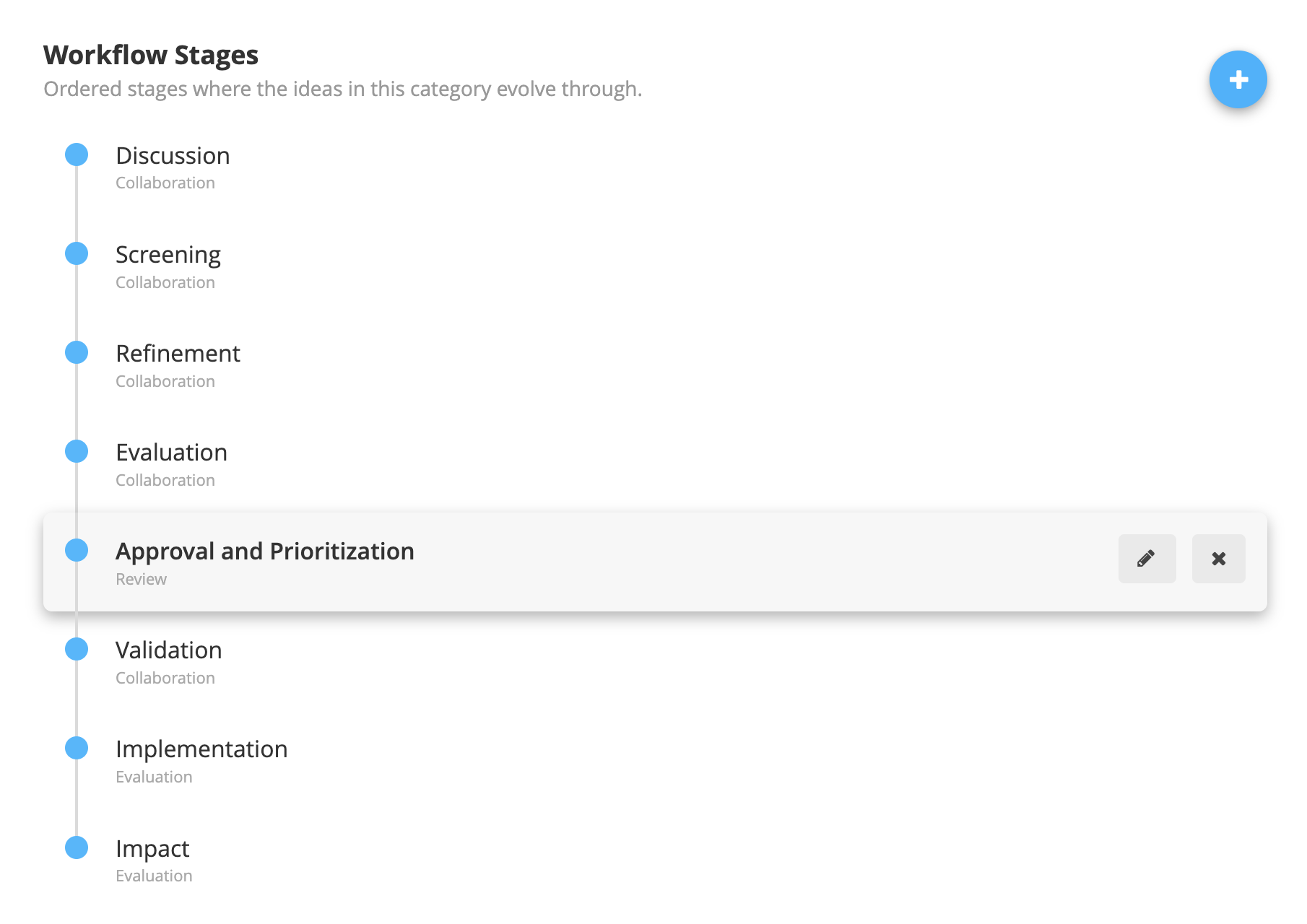
Project Management Features
With a shortlist of high-potential ideas that have an acceptable level of risk, users can plan their launch using our project management tool.
For each idea they want to launch, users can outline the tasks that need to be completed and assign them to certain teams.
Then, they can create task cards for each task with additional information that teams need to review before starting the project. For example, if the product team is building the full product, this information may include customer feedback during the prototyping stage and guidance from the legal team on regulatory compliance.
As we can see in the screenshot below, the innovation department inside a healthcare company is planning the launch of three new projects: a patient-carer bootcamp, a mobile phone app, and a new waiting room MVP. For each project, they can see who’s in charge of it, its status (past due, done, stuck, or planned), and the due date.
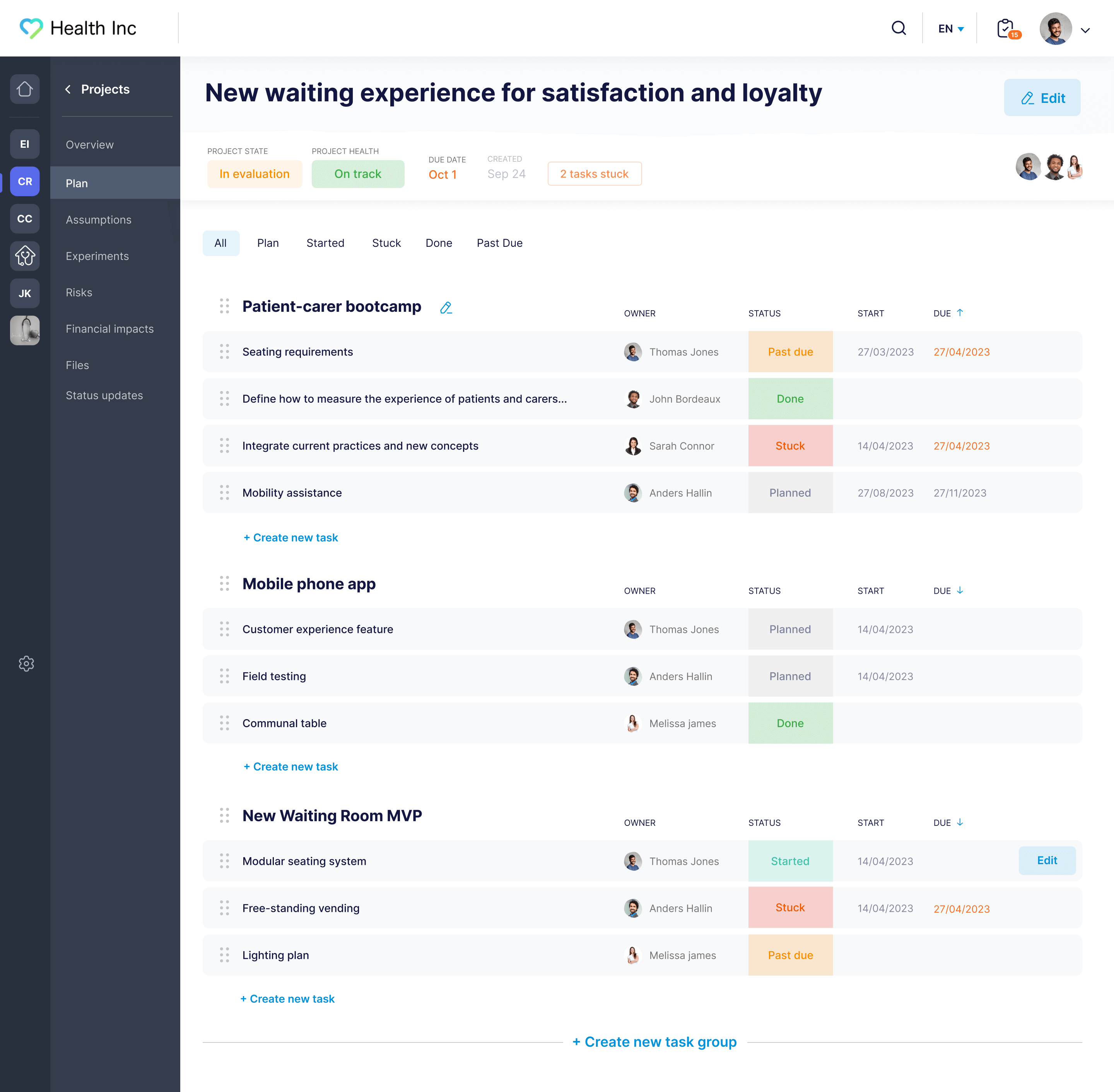
Read more: How to Develop an Innovation Process to Launch New Ideas
Portfolio Management Features
Once ideas are implemented, users can utilize our portfolio management feature to get an overview of all previous projects (as well as projects teams are currently working on).
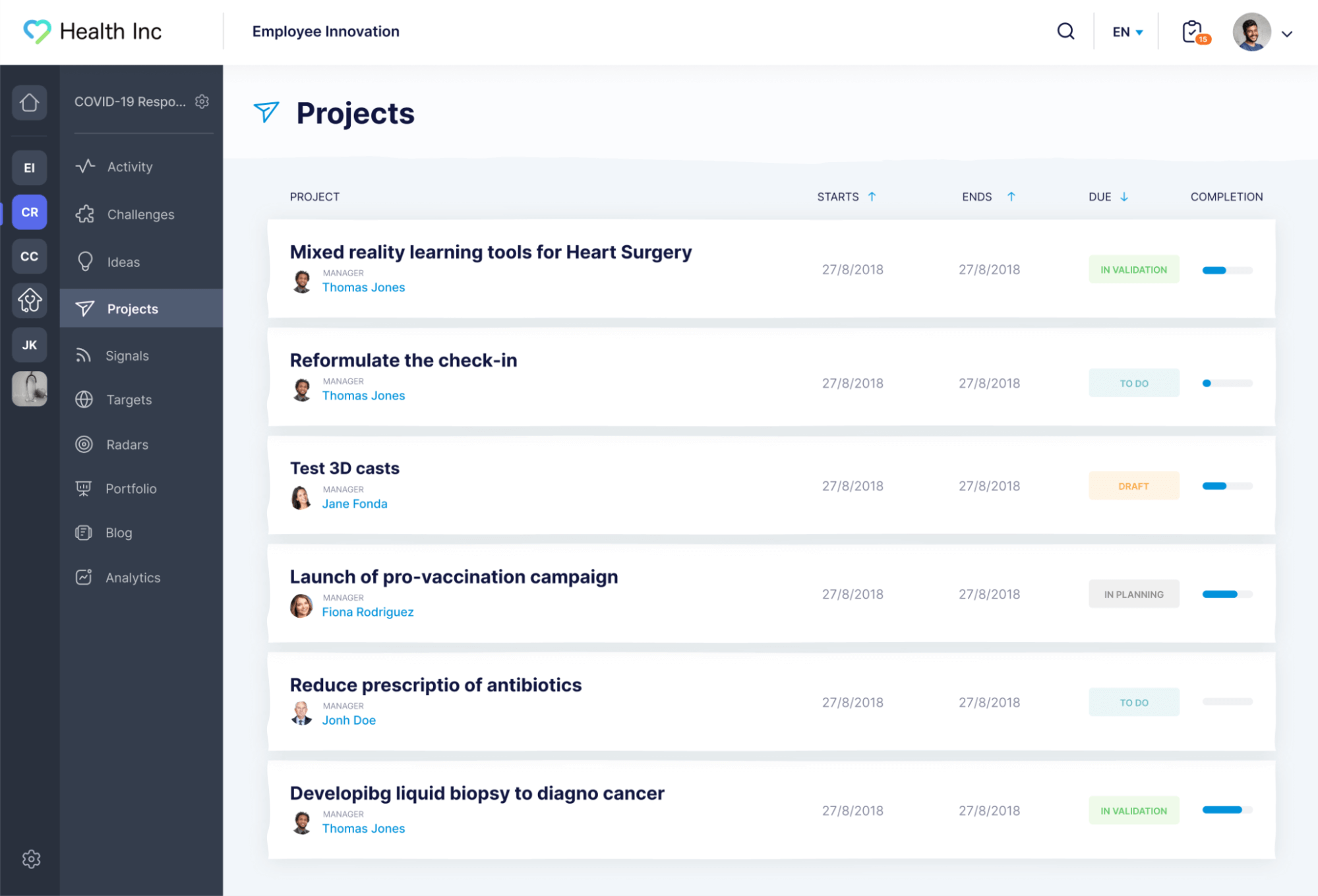
Users can then analyze an idea's impact on the organization. Did it save money or generate additional revenue? If the idea isn't as impactful as expected — perhaps even costing the organization money — users can investigate why. Were any mistakes made during validation or implementation, and how can they be avoided in the future?
Additional Features That Help Organizations Establish a Culture of Innovation
These features in InnovationCast encourage users to participate in innovation efforts:
Signals & Scouting
Signals & Scouting is a feature that centralizes news sharing and helps innovation managers, stakeholders, and department leaders stay updated with the latest industry news and trends.
Signals & Scouting allows team members to share news they think everyone else inside the organization should know about. When users log into InnovationCast, they can view these updates on their newsfeeds and engage in discussions around them, potentially sparking the creation of new ideas.
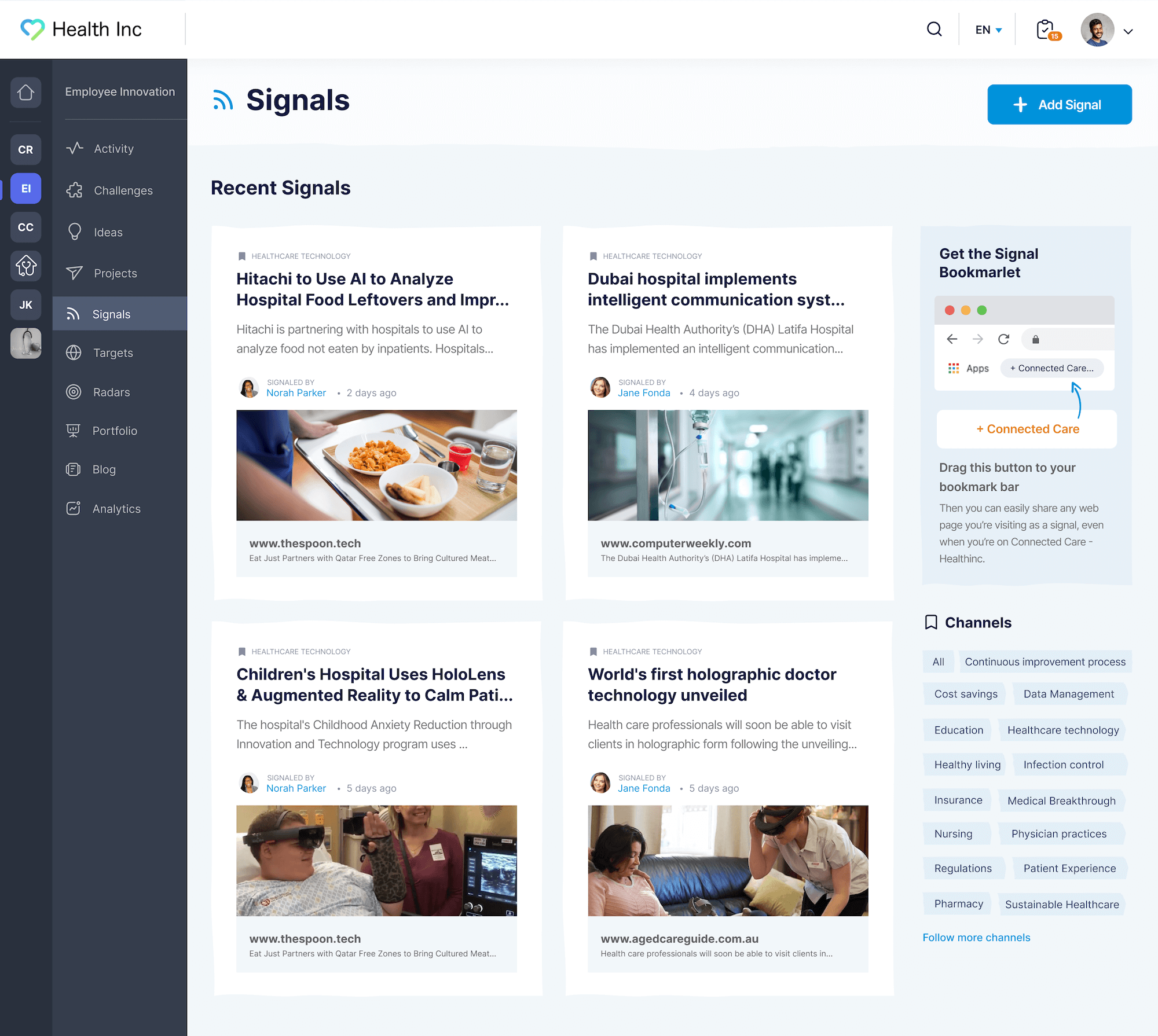
For instance, if an employee comes across an article about a competitor switching to a subscription-based pricing model, they can share it via Signals. Decision-makers can then evaluate whether to adopt a similar pricing model or stick with their existing one.
Employee Badges & Rewards
An essential part of fostering a culture of innovation is recognizing and rewarding employees for their contributions.
Employees often invest significant time brainstorming and submitting ideas, which can draw their attention away from their existing job responsibilities. Rewards can make their efforts feel worthwhile and encourage future participation in innovation efforts.
To support this, we integrated an employee badges and rewards system into InnovationCast. When an employee or user achieves a particular milestone, maybe they submit an idea that gets launched; you can reward them with anything from cash prizes to gift cards, PTO, vacations, or tickets to a game or show.
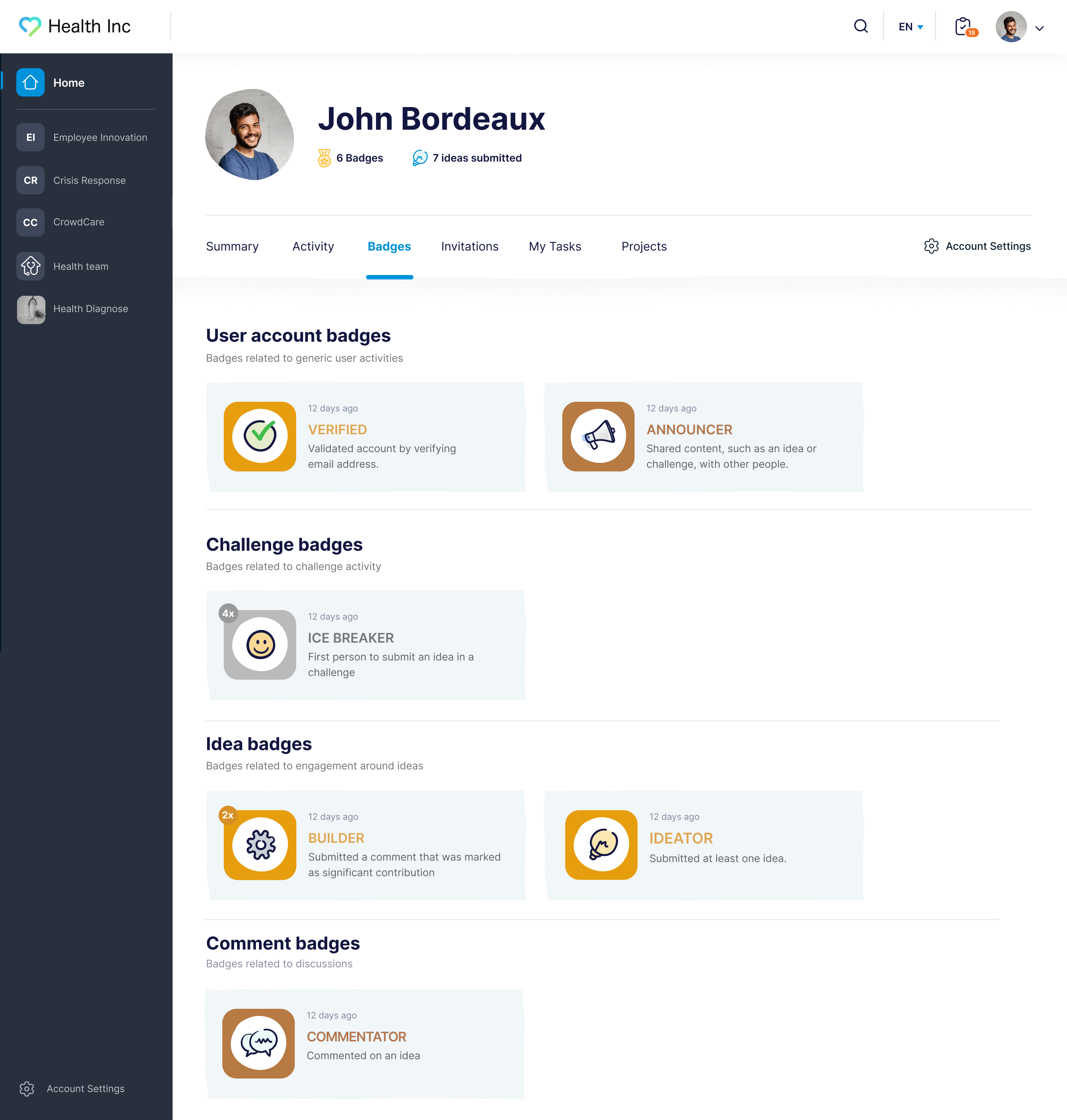
Additionally, you can choose to implement a points system where you give users points for performing certain tasks. Then, you can create rewards that can be redeemed with a certain number of points. This gives users the opportunity to save up their points and spend it on their favorite reward.
Read more: How to Encourage Innovation in the Workplace
Onboarding Training Materials & Email Reminders
It’s common for organizations to struggle with onboarding users, which is why we added onboarding training materials within InnovationCast.
When you invite new users to the platform, you can automatically send emails containing onboarding materials like training videos and articles to their inboxes. Users can watch a few of these videos (where they learn how to respond to challenges, reply to their colleagues’ ideas with feedback, and post Signals) and start contributing to innovation efforts immediately.
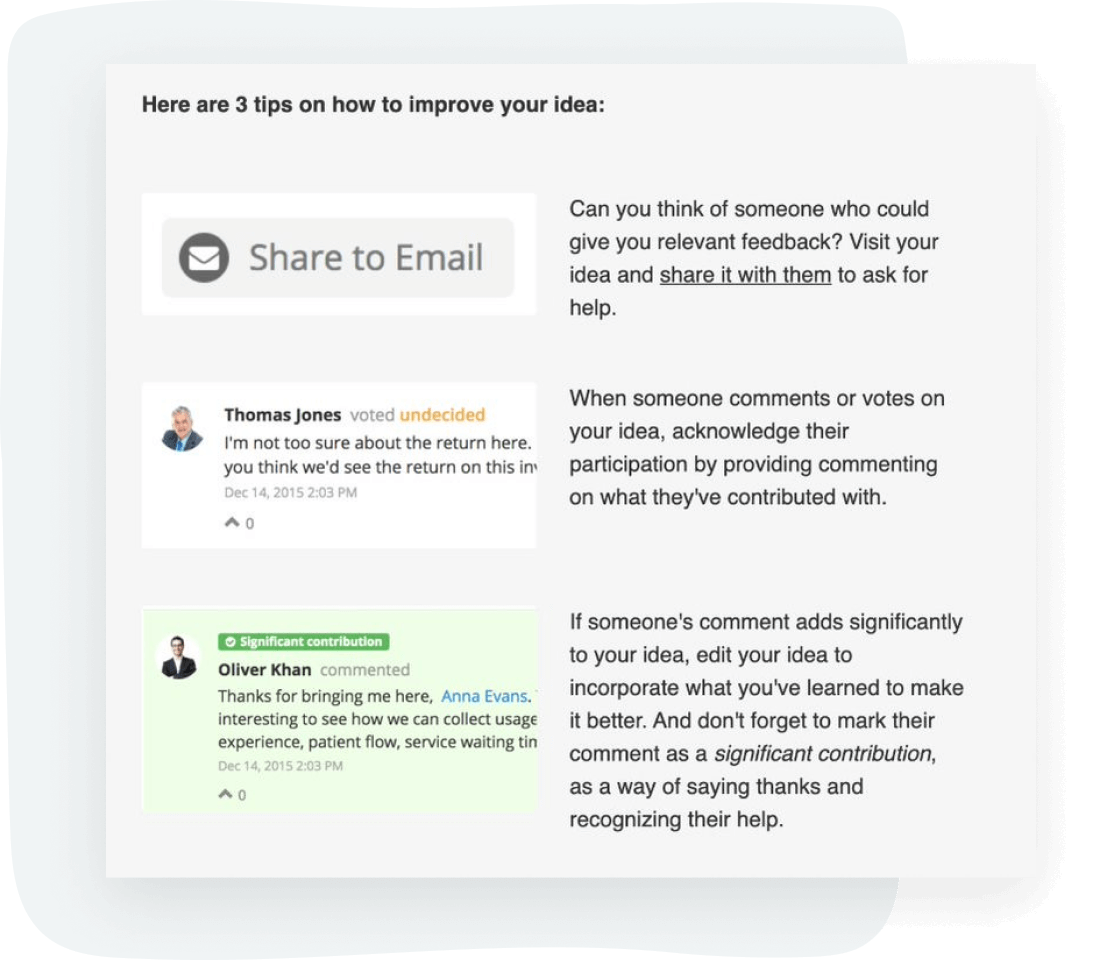
We also have training materials for administrators to learn how to create effective challenges, establish accepted categories for ideas, and configure evaluation workflows around their processes.
Establish a Reliable Innovation Process Within Your Organization Using InnovationCast
InnovationCast has worked with businesses, educational institutions, and government organizations to help them establish reliable innovation processes. Some of these names include Visa, DHL, ING, and Novo Nordisk.
Book a demo with our customer success team to discover how you can collect ideas and turn them into solutions that positively impact the company.
2. HYPE Innovation
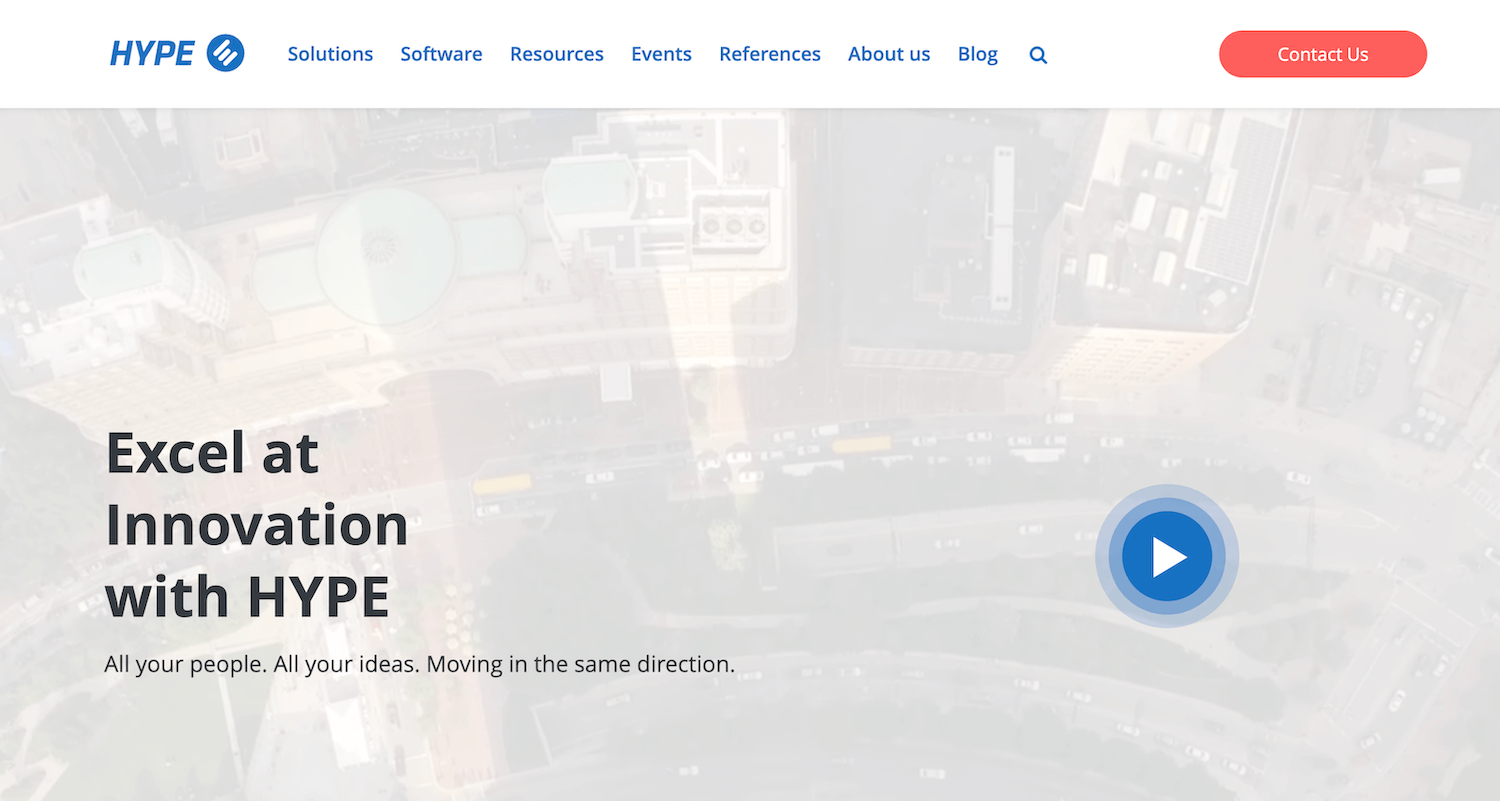
HYPE Innovation is an innovation management software and consulting company that helps organizations build innovation strategies and execute on them by collecting ideas from employees and developing them into working solutions.
During onboarding, HYPE's customer success team joins you on a call to understand your innovation goals, such as the types of ideas you want to collect and what goals your organization wants to achieve with an idea management program. Then, they tailor their platform around these factors.
Features
Strategy — HYPE helps organizations build innovation strategies by identifying their objectives and developing roadmaps to achieve them.
Ideation — HYPE offers idea collection tools, including time-bound and always-open calls for ideas.
Partnering — Innovation managers can identify potential opportunities and establish external partnerships.
Innovation Projects — Innovation managers use HYPE's idea evaluation workflows to refine, assess, and validate ideas to determine which ones are worth implementing. Note that HYPE supports only a single workflow, so all ideas must go through the same process.
3. Wazoku
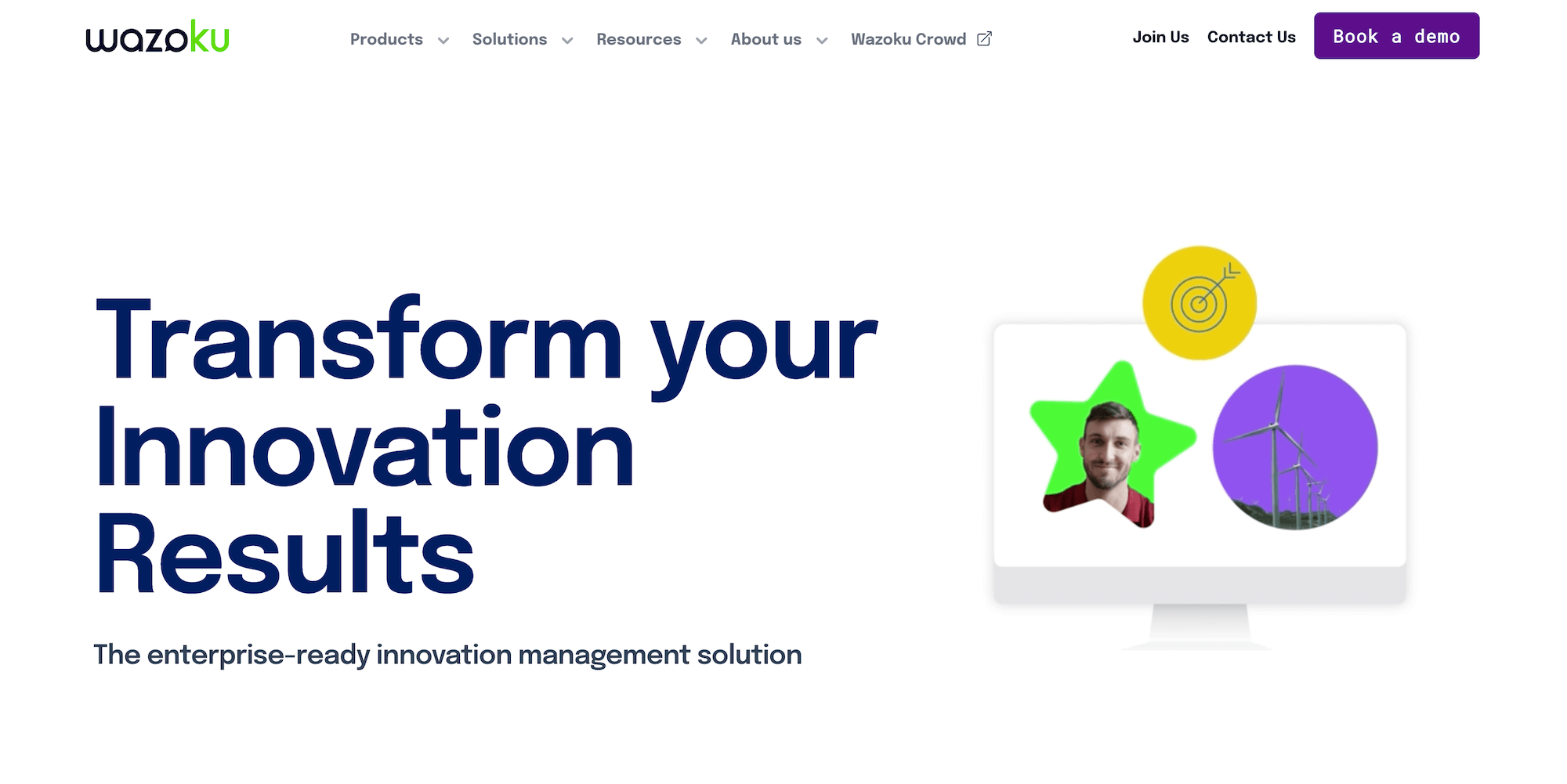
Wazoku is idea management software designed to help organizations establish effective innovation programs. Positioned as enterprise software, it has worked with companies like Mastercard, Microsoft, NASA, and Shell.
Similar to HYPE Innovation, Wazoku’s customer success team will meet with you on a call to understand your organization's innovation goals and tailor their workflows and settings accordingly.
However, while Wazoku assists with setup, they don't provide a way for you to adjust evaluation workflows on your own.
Features
Platform — Manage innovation from idea collection to implementation and impact tracking. Wazoku's customer success team will assist with onboarding new users and leveraging the brainpower of your entire workforce.
Scout — An open innovation platform where users can connect with outside experts, startups, and potential partners to capitalize on opportunities.
Portal — Where innovation managers and stakeholders manage relationships with companies and other external partners.
Crowd — A database of millions of subject matter experts in fields such as engineering and healthcare. Innovation managers and stakeholders can use the expertise of these professionals to solve organizational problems and address opportunities.
4. Brightidea
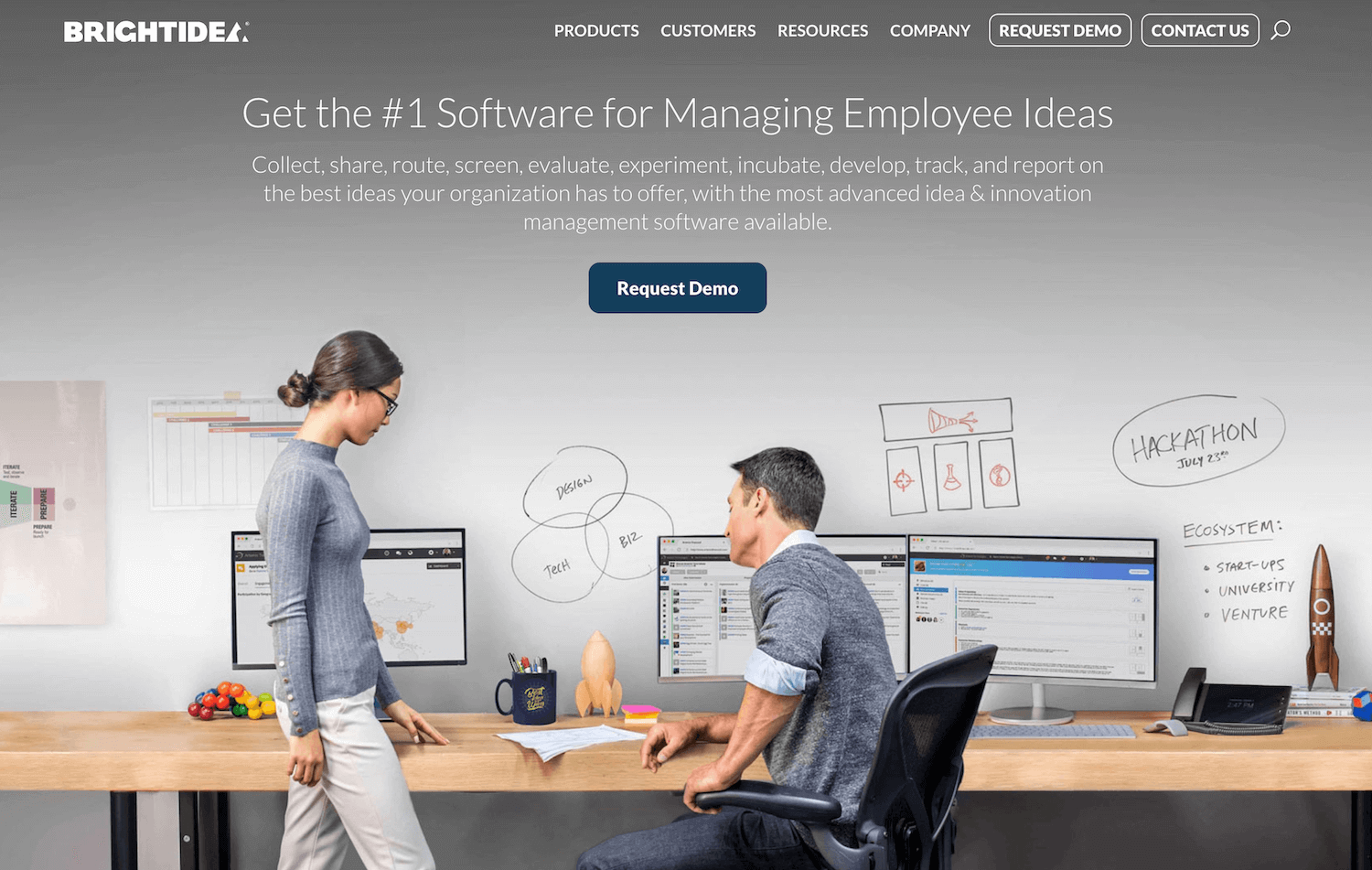
Brightidea is an enterprise innovation management tool with a toolkit of features to support all the stages of the innovation process — from idea collection to implementation.
They mainly target organizations with remote teams because the platform specializes in centralizing everyone under one hub and encouraging them to share ideas, work together to improve them, and move them forward to implementation.
Features
Idea box — Allows users to submit ideas at any time.
Program — Enables innovation managers to create challenges around specific issues or priorities and solicit ideas from users.
Lab — Centralizes all ideas for assessment and validation before launch.
Transformation — Facilitates the creation of tasks required to validate and implement ideas, inviting specific teams to complete them.
Ecosystem — Helps innovation managers find and partner with startups, universities, researchers, and other outside experts to support their innovation strategy.
5. Qmarkets
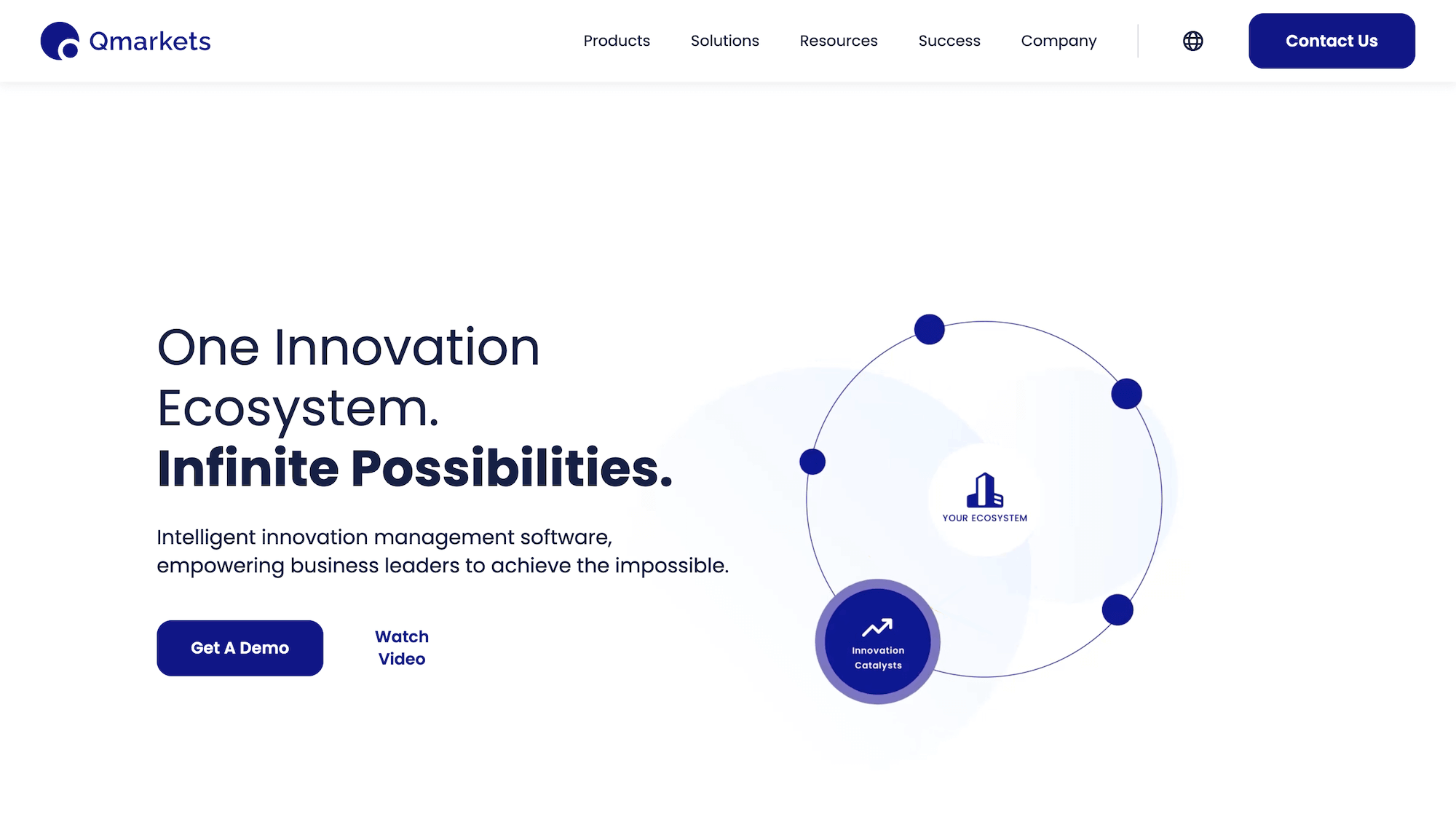
Qmarkets is an all-in-one innovation ecosystem that allows organizations of all sizes to bring user groups together and innovate to address opportunities outlined in the innovation strategy.
Innovation departments can use Qmarkets' idea collection features to source ideas from a variety of users, including employees, customers, partners, students, and universities. They can then utilize Qmarkets' workflows to evaluate and validate ideas before launching them.
Features
Q-ideate — This is Qmarkets’ idea generation feature. Users can submit business ideas and view their progress to see whether they are being discussed, evaluated, approved, or implemented.
Q-optimize — Innovation managers can create postings about certain priorities and spark problem solving and decision-making among users.
Q-trend — Innovation managers can stay current on industry trends and news and brainstorm how they impact the organization.
Q-impact — Qmarkets' project management feature allows innovation managers and stakeholders to plan out the tasks required to launch an idea.
Q-scout — This is Qmarkets' open innovation feature, which lets innovation managers draw insights from outside sources such as startups, universities, students, etc.
Read more: 5 Best Open Innovation Software (2025 Reviews)
Additional Innovation Tools
If you're not currently in the market for innovation management software — perhaps you're just starting out and only collecting a handful of ideas at a time — and you're looking to manage each stage of the innovation process separately, consider these options:
Coggle is a brainstorming tool that allows you to invite employees and external users to collaborate on idea generation. It offers a variety of flowcharts and mind maps that you can use to map out your processes and spark new ideas.
Lucidchart is a flowchart and diagramming platform that offers templates (business model canvas, technical diagrams, systems and architecture, etc.) that organizations can use to spark creative thinking among employees.
Miro is a tool where users can partake in brainstorming sessions, invite their colleagues to improve ideas, and plan out workflows required to validate ideas. However, as mentioned above, these tools don't have the features to manage validation tasks, monitor projects, and push them into implementation — they only allow you to visualize workflows.
Trello is a project management tool where team leaders can invite employees, create tasks for idea validation and implementation, and assign them to specific teams with deadlines. Users can update progress within these task cards and alert team members of any roadblocks.
Create an Innovation Culture with InnovationCast
If you’re interested in learning how InnovationCast can support innovation within your organization, schedule a free demo.
Related reads:

